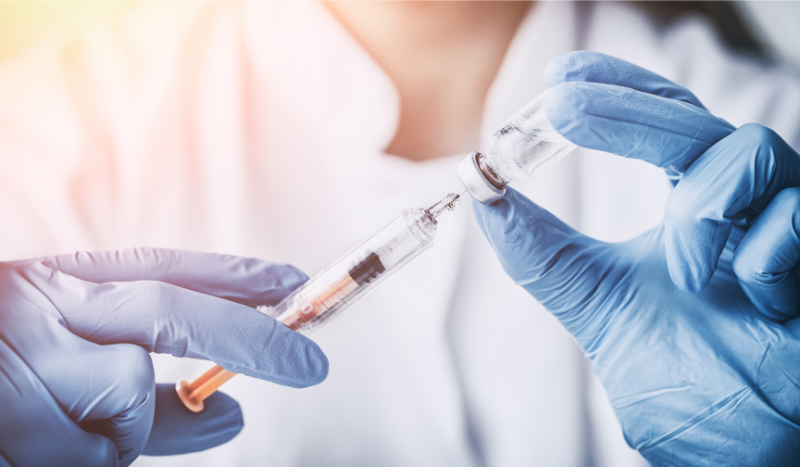New vaccines emerge, renewing cold chain awareness and market growth
Earlier this year the FDA approved the first two vaccines for RSV aimed at older adults. This new preventive mechanism, along with updated COVID and influenza vaccines, offer a good percentage of the population enhanced protection against the “triple-demic” of serious respiratory illness. As vaccine vials make their way to hospitals, clinics, and pharmacies for administration to millions of individuals their effectiveness is preserved by, among other protections, temperature-controlled packaging.
In the last four years, the introduction of new vaccines, most notably, those for COVID, have driven tremendous vaccine market expansion. Just prior to the start of the COVID pandemic, the international vaccine market was valued at $33 billion, according to the World Health Organization. In 2022 the market had expanded by nearly 3X. And now with new vaccines for RSV, a condition which has been in great need of preventive therapy given its potential to be life-threatening, the market will likely grow significantly again.
Demand for cold chain protection accelerates
As the portfolio of global vaccine offerings expands, so does the need for temperature control mechanisms. Yet when it comes to these protections and controls, there is no one-size-fits-all approach. On one end of the spectrum are mRNA-based COVID vaccines that require the most specialized thermal control measures to maintain efficacy. These vaccines are transported in a frozen or ultra-cold frozen state and also have specialized, and evolving, storage instructions. Other immunizations, including those primarily aimed at children, flu shots, and the recently approved Novavax COVID vaccine, necessitate more traditional pharmaceutical cold chain logistics. While easier to maintain their required ‘refrigerated’ range of 2 to 8 degrees Celsius (36 to 46 F), any temperature deviation can negatively impact the preventive properties of the therapies. This is why these product inserts routinely call out that in the event of a vial experiencing freezing, it should be discarded.
With seasonal vaccine shipping and transport happening routinely during cooler months in the northern hemisphere, as temperatures drop, the risk of accidental freezing during distribution emerges. Thermal material designed to keep pharmaceutical products within a temperature range for a period of time has evolved tremendously within recent years. Advances in engineering have created lightweight material such as VIP (Vacuum Insulated Panels) that is also thermally superior and sustainable since its durability lends itself to re-use. So regardless of what is happening outside of the rigorously tested temperature-controlled packaging, the interior product is protected for a calculated period of time measured in hours/days.
As a vaccine or any other temperature-controlled therapy is packaged for transport to the awaiting doctor, pharmacist, or patient, it leaves the distribution center in a pristine state. Once en route, any number of factors could create risk. Many of these factors are in fact controllable since they are related to human error: damaged packaging during transport, delays due to mis-handling, and delays due to supply chain snags. With applications in AI control tower capable of assessing large collected datasets to support decision making, over time, controllable sources of failure can be reduced or eliminated.
Neither snow nor rain nor heat…
When it comes to uncontrollable sources of error, namely events that stem from weather such as catastrophic storms or extreme high temperatures and heat domes, the best offense is a good defense. Just as exposure to freezing conditions can damage therapies, so can prolonged exposure to high heat. With vaccines in particular that are packaged for mass administration, each shipment parcel may have hundreds of doses so the financial value is high, as is the therapeutic value. Taking elements of controllable and uncontrollable risk together, it becomes understandable why globally, approximately 50% of vaccines end up wasted.
The benefit of advanced thermal packaging that has been tested and certified to international standards is that the packaging will withstand the elements under most normal operating conditions. For additional confidence, digital temperature loggers can be added in to product packaging to monitor ambient temperatures. While these embedded devices cannot prevent a mishap, they can record what the product(s) experienced in the face of a shipping exception or delay. This temperature data can be analyzed to possibly prevent unnecessary waste and additional re-manufacturing cost. As loggers get smaller, smarter, and commoditized in terms of cost, they can yield a return on investment.
The winter 2023 outlook is an interesting one thanks to the phenomenon of El Nino. Some weather prognosticators in the US feel that the upcoming months could be warmer in the north but cooler and wetter in the south. Others predict that the conditions could be ripe for larger amounts of snow which, if the case, could lead to supply chain disruptions including longer delivery durations. Annoying when it happens to consumer goods, but potentially dangerous when the delay affects clinical products such as vaccines that are meant to protect well-being. However advanced thermal packaging and complementary technology tools can diminish risk and safeguard the breakthroughs designed for good health.
AeroSafe Global has been safely delivering vaccines at all temperatures for over 10 years, providing our customers with solutions to distribute over 2.2 billion vaccines.
